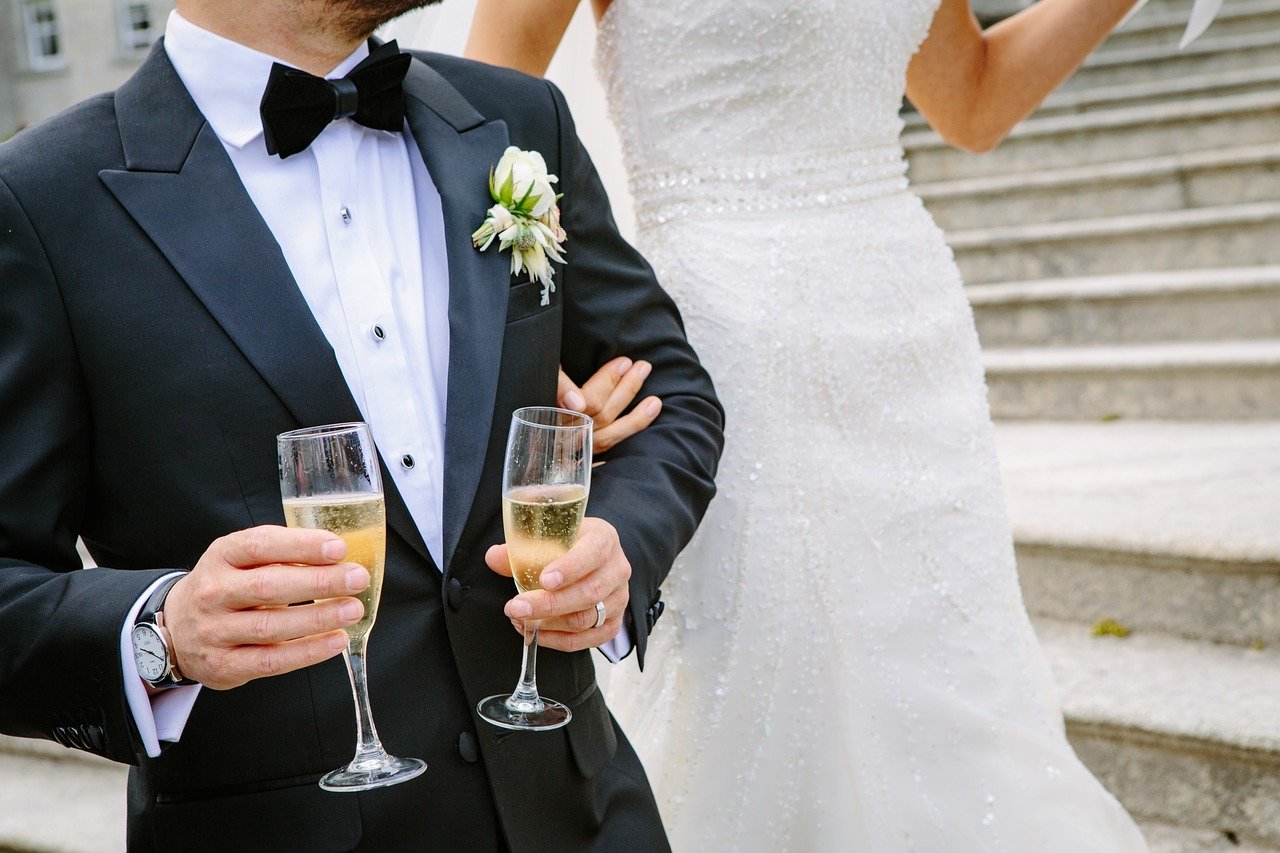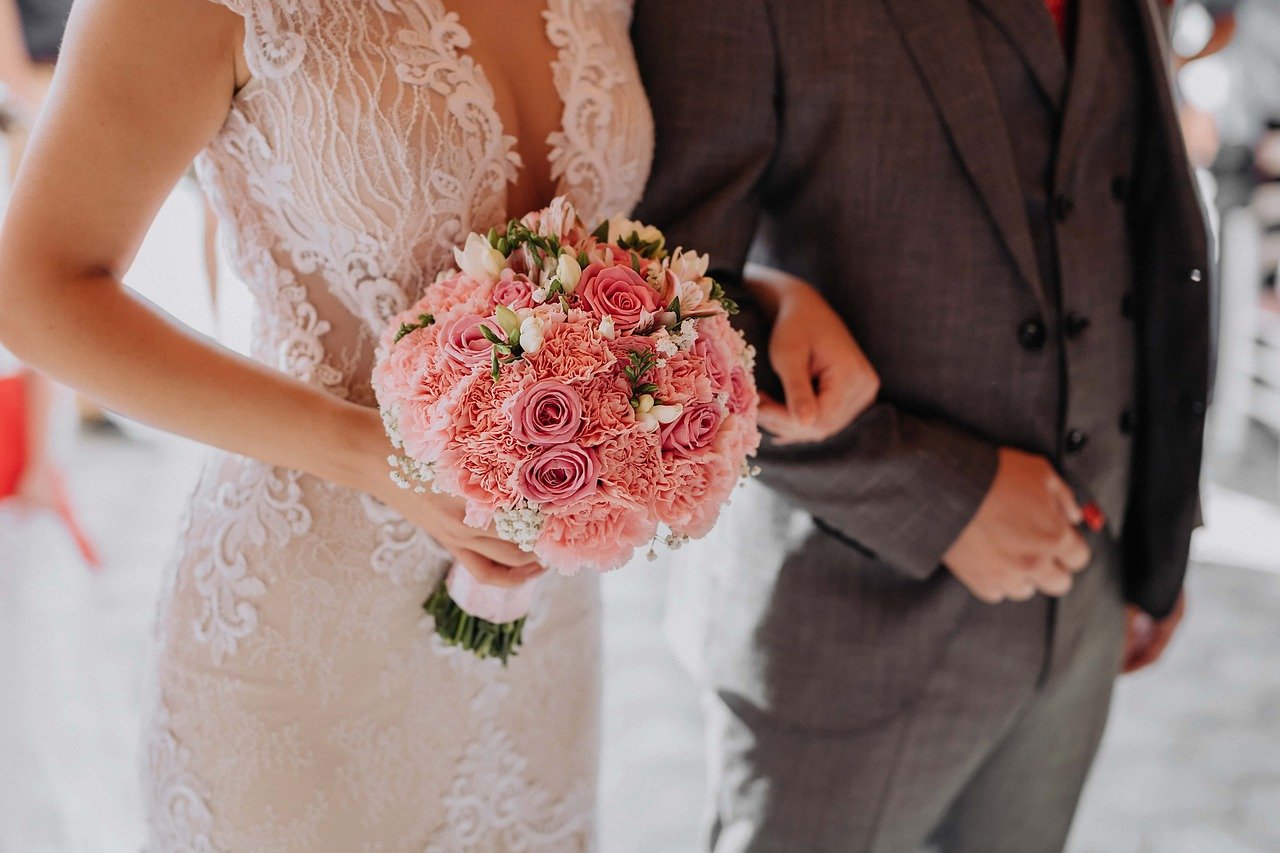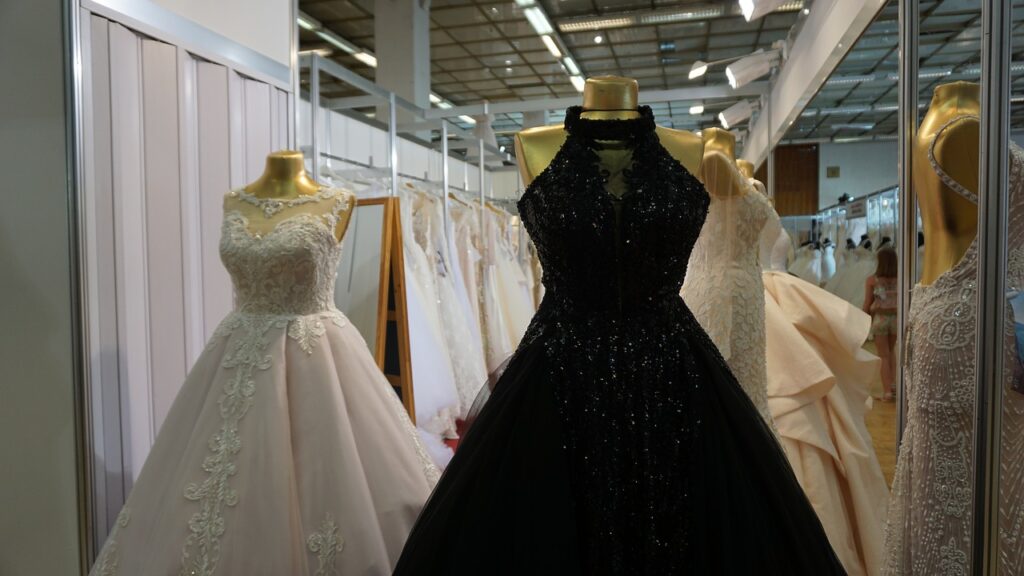You're nearly finished planning your big day, but there's one more thing you need to do before the big day arrives: make sure that your wedding dress fits perfectly. The last thing you want on your special day is a poorly fitting wedding dress!
Wedding dress alterations are a part of the process for most brides. Whether you need to make your dress fit better in certain areas, or if it needs hemming, there is a tailor out there who can help. This blog post will give you tips on what to look for when choosing a wedding dress tailor and how to prepare for your appointment.
How do you know if your wedding dress needs alterations? The best way to figure this out is by sitting down and examining the garment. If it's too long, too short or just does not fit correctly, then the chances are that it will need some alteration. In addition to fitting issues, several other factors may require an adjustment to your gown.
You're finally engaged, and you've been dreaming of your perfect wedding dress for years. You may have already found it, but now that the big day is approaching, you need to find a seamstress who can make any last-minute alterations so that it fits perfectly. We'll be giving you tips on how to go about finding someone as well as what to look out for during fittings.
You've found your perfect dress; you're probably thinking about where to buy it and the day of the wedding. But what about alterations? You might be feeling a little nervous because you don't know if you can handle them yourself or if you need to find someone else to do them for you.
You've just picked out the perfect wedding dress for you and your groom, but it needs to be altered before you walk down the aisle.
Whether you're looking to alter a few inches or need help with a major adjustment, many common alterations can be done to make sure your dress fits perfectly on your big day.
Many places offer alteration services, but they all have different levels of expertise and prices. Alterations range from simple hemming or taking up a dress to more complicated tasks like adding sleeves or changing necklines.
The cost will depend on how much work is needed, how quickly they want it done, and whether the bride has any specific requests in mind (like adding lace). There's also some planning ahead for those.
This blog post has tips for finding the best tailor and getting your dress fitted perfectly, so it's ready for the big day!
1. Types of Wedding Dress Alterations
Basic Hemming
Simple alterations begin with hemming the length, adjusting the sides of the gown, and fine-tuning the fit of the dress. These basic adjustments are essential for the gown to look its best.
"Every wedding dress needs alterations," says Tina Zimmerman, director of alterations at Kleinfeld. "Alterations ensure that a bride's wedding dress fits her perfectly, meets all of her specifications, and most importantly, makes her feel like her most beautiful self."
A well-fitted gown should support and shape the bust, accentuate and complement the body's shape, and be long enough to cover the shoes, but not too long that the skirt becomes a tripping hazard.
While wedding dress shopping, be mindful of alterations you may need and factor the cost into your dress budget.
Adding Details
More extensive changes can be made with enough budgeted time and money (these will cost more). Customizations include adding details like off-the-shoulder straps, sleeves, train length, lace appliqués, beading, buttons, and a bustle.
"Gowns do not come with a bustle," says Zimmerman. Instead, during the alteration process, the bustle is created and sewn into the wedding dress "to keep the train from dragging behind the bride while she dances at her reception."

2. Wedding Dress Alteration Tips
Your wedding dress probably needs to be altered no matter what
Most wedding dresses are made in generic sizes, so very rarely does a bride's body match a designer's dress perfectly (for example, your gown might fit like a glove in the hips but be too loose in the bust).
After you find your wedding dress, the bridal salon compares your measurements to the designer's size chart and orders the closest size of the gown. Once it arrives, the dress must then be tailored precisely to fit your figure.
Schedule not just one but three dress fittings
Bridal salons and seamstresses usually recommend that you have at least three wedding dress fittings. Schedule your first fitting to take place roughly three months before your wedding day, the second fitting about a month before your wedding, and your final fitting at the two-week mark. You may need an additional fitting if you're adding extensive customizations, such as long sleeves or a train. Typically, your gown goes home with you at the final fitting—hooray!
Stay on schedule
To take the stress out of wedding dress alterations, it's best to buy your dress early, leaving plenty of time for fittings and tailoring.
Buy a dress ten months before the wedding if possible (It can take up to five months from when you order it to arrive in the salon). Then, schedule a fitting eight to 12 weeks before the wedding and a final fitting no later than two weeks before your wedding.
If you're making major changes to the design—reworking the corset or cups, for example, or accommodating a pregnancy—budget a few extra weeks.
Ask your bridal salon about in-house wedding alterations
One of the most important pieces of advice for wedding alterations is asking your bridal salon if they offer tailoring services in-house.
Not only is it a huge time-saver, but those seamstresses will have likely worked with your specific dress before (or similar styles by the same designer), and many shops will give you a small discount for doing your alterations in-house.
But if they don’t, don’t panic! Your salon will likely be able to recommend a few trusted professionals who specialize in wedding dress alterations.
Be mindful of your anticipated wedding weight
Never order a too-small dress as motivation. It's easier to take a larger dress in than to let a smaller one out. Instead, consider a gown with structure. About 40 per cent have built-in corsets, which can be easily tightened or loosened.
And ask if the designer will build new cups if your bust size changes (some won't). Can't find a corseted gown you love? Try an A-line, which covers lingering pounds. In general, the slinkier the dress, the harder it is to fix the fit if you gain or lose weight.
Bring the right bridal accessories
For your first fitting, bring the shoes and undergarments you plan to wear on your wedding day, as these can greatly impact the fit of your gown.
Donning a pair of sky-high stilettos will require your wedding dress hemline to be a different length than if you're opting for a couple of sparkly bridal sneakers or flats. Another pro tip for bridal alterations? To ensure your dress is tailored to the exact fit you want while walking down the aisle, be sure to come prepared with the shapewear, undergarments and jewellery you plan to wear on the big day.
Bring your wedding shoes, accessories, and undergarments to every fitting
Be sure to bring your day-of essentials to get a true fit. Brides need to bring the shoes and undergarments they will wear on the wedding day to obtain the proper fit.
We all know the difference Spanx or the right strapless bra can make. You want to wear exactly what you'll be wearing on your wedding day, including shapewear, for the best possible tailoring. During the alteration, the process is when a bride can see and feel what she will look like on her wedding day.
When your tailor adjusts the hem, make sure to wear the shoes you'll wear at the wedding so you'll be the same height you will be on the big day. If you haven't picked out your wedding shoes yet, bring a pair with a height comparable to the shoes you imagine yourself wearing (otherwise, you'll end up with an incorrect alteration).
And while jewellery, gloves, and other accessories might not change the fit of your wedding dress, they contribute to the overall look. For example, where your wedding necklace falls might influence where you want the neckline of your dress to sit.
Remember that the gown is adjusted for the wedding shoes, so if you take them off or switch into flip flops for the reception, it will be too long. For this reason, Kleinfeld recommends brides find a shoe that's comfortable enough to wear at both gatherings.

Go for a hemline that grazes the ground
Rita Ertl, Monique Lhuillier's director of alterations, advises brides to aim for a hemline that gently grazes the ground. "With your hem grazing the floor, you will be able to walk, dance, and mingle with your guests," Ertl explains.
The main thing is to make sure you won't trip on the dress. After the seamstress pins the dress hemline so that it grazes the ground, walk around the salon a bit in your shoes to make sure it's a comfortable length.
As for any brides wondering if a grazing hemline will end up staining and ruining the dress, rest assured that no matter the length, the bottom of the gown will get a little dirty on the big day. Still, the stains will come out during the post-wedding preservation of the wedding dress. So don't worry about it.
Don’t freak out if your wedding dress doesn’t fit perfectly at first
You get to try on your actual wedding dress during your first fitting for the first time (woo hoo!). But don't panic if it doesn't fit perfectly—this is totally normal. Instead, be direct with your seamstress about how you envision your dress looking and feeling and if there are any significant changes you want to make, such as adding straps or altering the neckline. Most importantly, don't be afraid to be honest, and ask questions! Chances are, your seamstress has seen it all, and they might have some great expert advice to share.
Speak up if your dress still doesn’t feel right at the second fitting
Your seamstress will do everything in her power to make sure your dress fits, but you're the one wearing it, so speak up if something doesn’t feel right.
Whether it's a zipper poking you, a strap falling down, or not enough support in the bust, being vocal will help you avoid having to book more fittings, which will ultimately allow you to stick to your dress timeline.
Be selective when choosing your entourage
It's proper wedding dress fitting etiquette to bring only one or two close friends or family members to get a second opinion. But, just like dress shopping, you want to avoid bringing too many people—all those opinions will stress you out and make the tailor's job that much more difficult.
At the last fitting, bring at least one person who will be helping you get ready on the wedding day—the seamstress will want to show them how to zip you up, lace your corset, or bustle your train.
Don't worry too much if you lose or gain weight once the dress arrives
If your dress doesn't fit after you've ordered it, or even after it comes, don't worry too much. The gown will be taken in at each fitting appointment if a bride loses weight until it fits perfectly.
If a bride gains weight, they will try to open the seams and release some extra fabric. If there is not enough fabric to work with, order fabric from the designer, and a panel can be added to the dress.
Include wedding dress alterations in your overall budget
Don't forget about wedding alterations when deciding what you're comfortable spending on a dress.
While the cost of alterations varies depending on your dress and the type of adjustments, most brides spend a few hundred dollars—and sometimes closer to $1,000. But, of course, the more you plan on customizing a dress, the more you'll spend.
Too many alterations won't ruin the dress
Whether you bought a larger dress to accommodate specific parts of your body, or you found a great deal on the perfect dress that wasn’t exactly your ideal fit, remember that this is what the dress alterations are for.
If you choose to purchase something outside of your typical size, don't forget that it is always better to buy a gown in a larger size rather than a smaller size. You can always make a dress smaller, but it is harder to make a gown larger. Also, depending on the style and embellishments on the gown, alterations should not 'ruin' the style.
Bring a friend
Bring a supportive friend or family member to cheer you on and bring good vibes and energy to the experience. They'll help you feel more comfortable and relaxed, act as an extra set of eyes, and of course, help you document the memories via endless BTS selfies.
Oh, and if the opportunity presents itself, having them there to grab you that much-needed celebratory mimosa doesn't hurt either.
3. Wedding dress alterations FAQs
How long does a dress fitting appointment last?
On average, you should plan for your first wedding dress alterations appointment to last about an hour.
The first appointment will take the longest—especially if you’re making extensive customizations, like adding sleeves or changing the neckline—since it’s the first time your seamstress will see you in the dress. Following your first appointment, each fitting typically lasts less than 30 minutes.
The first fitting will generally last one hour as your tailor begins to assess your dress and the alterations needed. At the first fitting the bride will meet the artisan fitter who will be with her during every fitting until her wedding day.
Following the first hour-long appointment, each subsequent fitting should take less time since the dress is getting closer and closer to the perfect fit.
How much can you alter a wedding dress?
The exact bridal alterations you can do will depend on your dress—the fabric, beading (if any), and whether you purchased it as sample size or had it made to order will all make a difference.
But in general, many experienced sewists should be able to work their magic and completely redesign your gown, if that's ultimately what you want. From adding corset panels to shortening straps, inserting a bustle, adding lace, sewing cups into the bodice, raising the hem, etc., your options for wedding alterations are practically limitless.

When purchasing your wedding dress, always ask the retailer or designer about the types of customizations that can be made. If they cannot accommodate your requests during the design process, they may be able to refer you to a professional sewist who specializes in working with their gowns.
What should I budget for alterations?
Bridal alterations can add up. Some salons charge per service ($225 to shorten your gown, $150 to resew seams, etc.), while others do a flat fee (around $500 to $900) that covers anything you'll need to make the dress fit you perfectly.
Design changes can cost anywhere from $50 (to cut a new dress neckline) to a few hundred (to add lace or beading, reshape the silhouette, or change the fabric). So make sure you factor in these costs before you buy.
Can you alter a dress that is too small?
While it's easier to take in wedding dresses that are too big, a professional sewist should also be able to alter your dress if it's too small and needs to be let out. In general, most wedding dresses have seams that can be let out by an inch or two, which is ideal if you only need your gown to be slightly bigger.
To go up several dress sizes, your seamstress can add a lace-up corset back or gussets (fabric panels that blend into the sides of the bodice).
How many fittings will I need?
How many fittings you'll need may all depend on the number of alterations required and how much your body changes during that time.
"The gown will start to take shape when the fitter starts pinning and tucking the fabric and sculpting it to the bride's body," says Nicole Sacco, former director of fittings at Kleinfeld, regarding the first fitting. "At the second fitting, the bride should have a better idea of how the gown will fit."
Often the alteration process can be complete in just two fittings, but Zimmerman says she tells her brides to prepare for three. "It's important to remember that your wedding dress was ordered according to the largest measurement (between hips, bust, and waist). Therefore, it is likely it will not fit properly at your first fitting appointment."
Either way, schedule your final fitting to take place one to two weeks before the wedding since your body won't change much in those last weeks.
What if I lose or gain weight before my wedding?
Even if you have your wedding dress a year before your wedding date, most seamstresses don't recommend having it altered until about three months before the big day. At that point, you’re not likely to experience drastic weight fluctuation that will affect the look of your dress.
After your first fitting, you should plan for two or three additional appointments: one or two a month before your wedding and the final fitting/dress pick up about two weeks before your wedding.
This gives your seamstress plenty of opportunities to ensure that the dress fits like a glove, even if your weight has changed by a couple of pounds.

